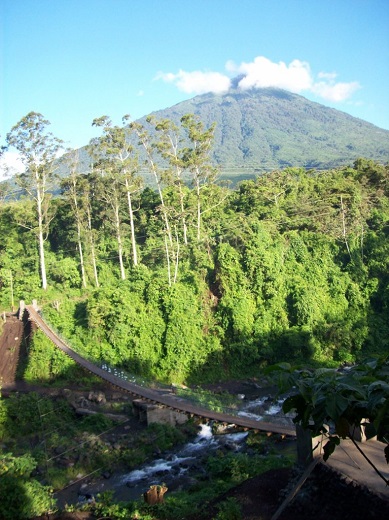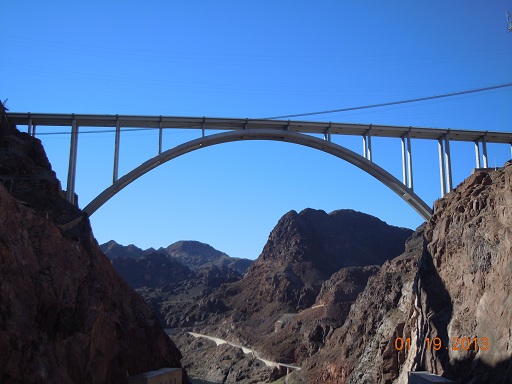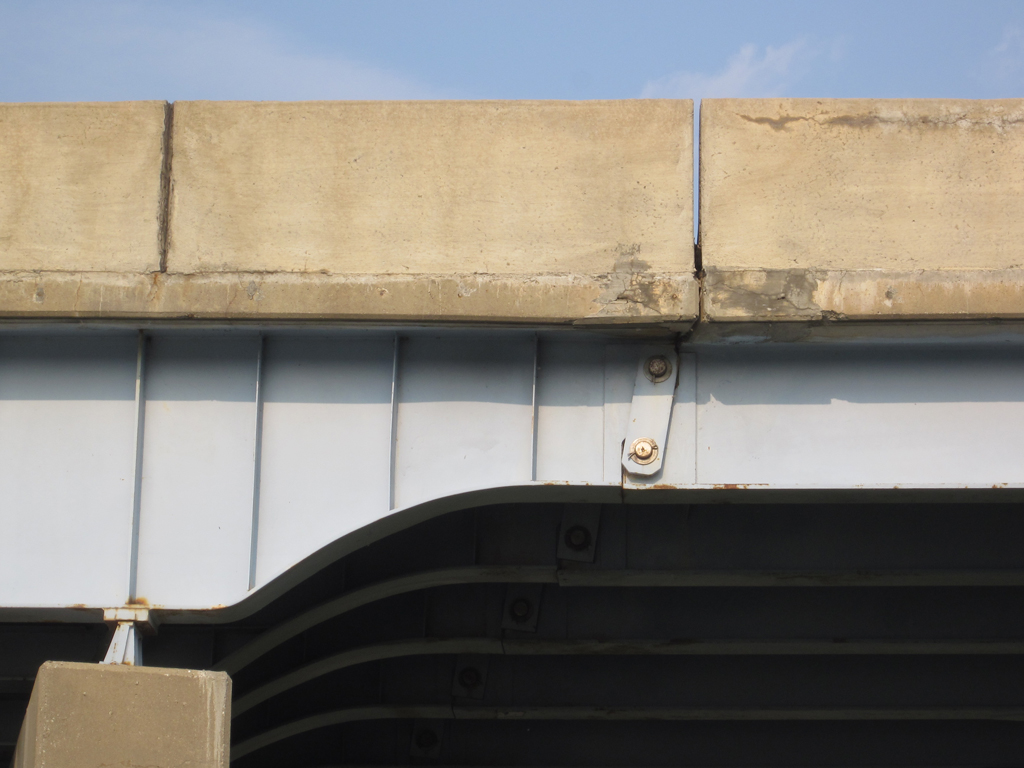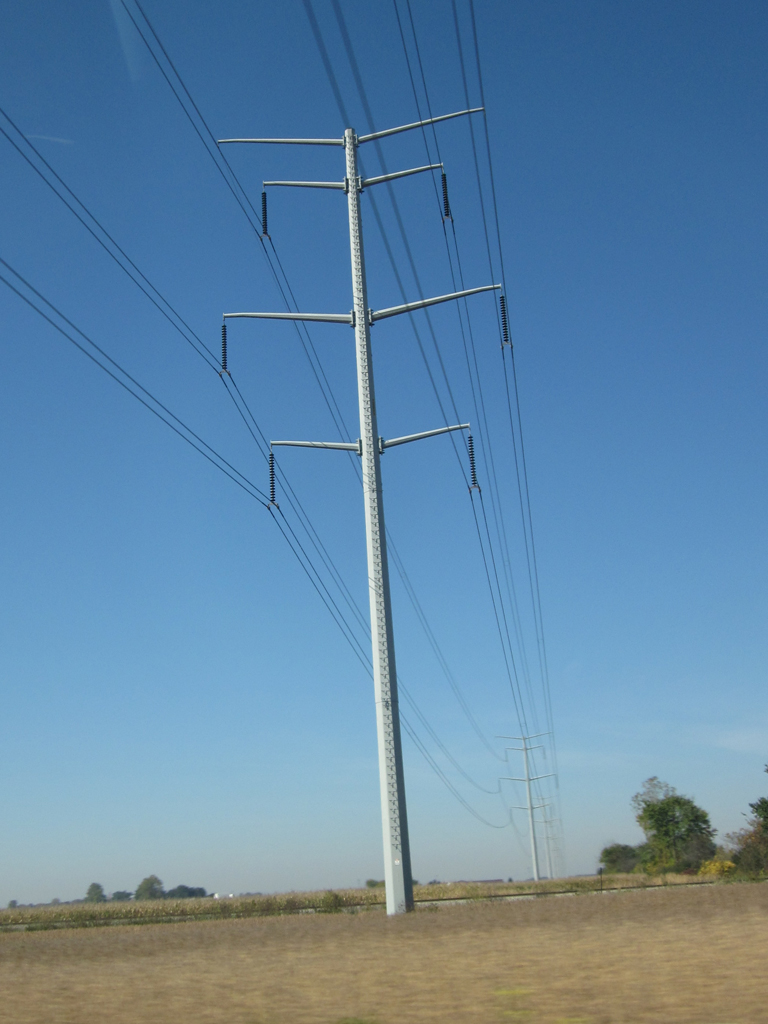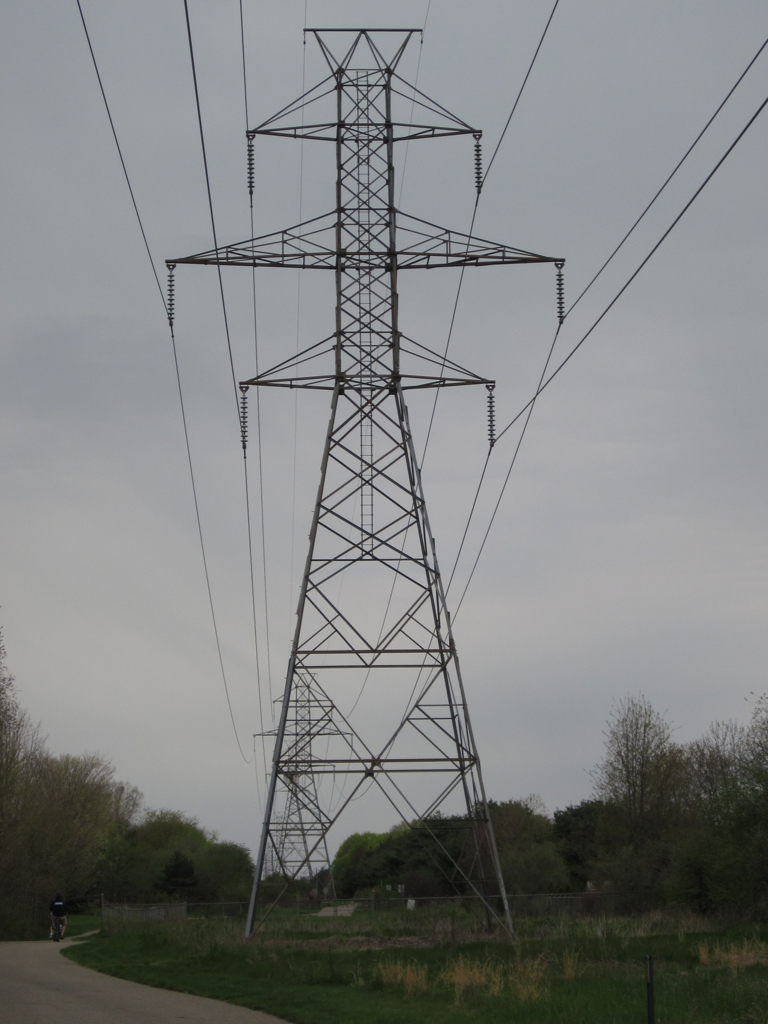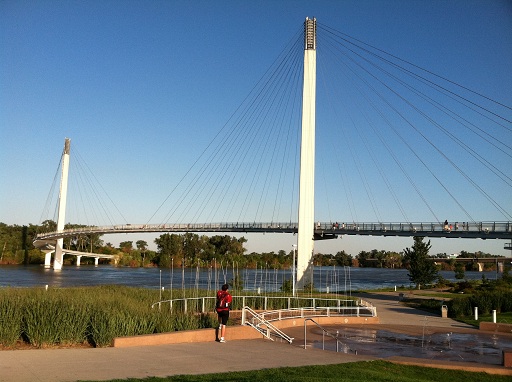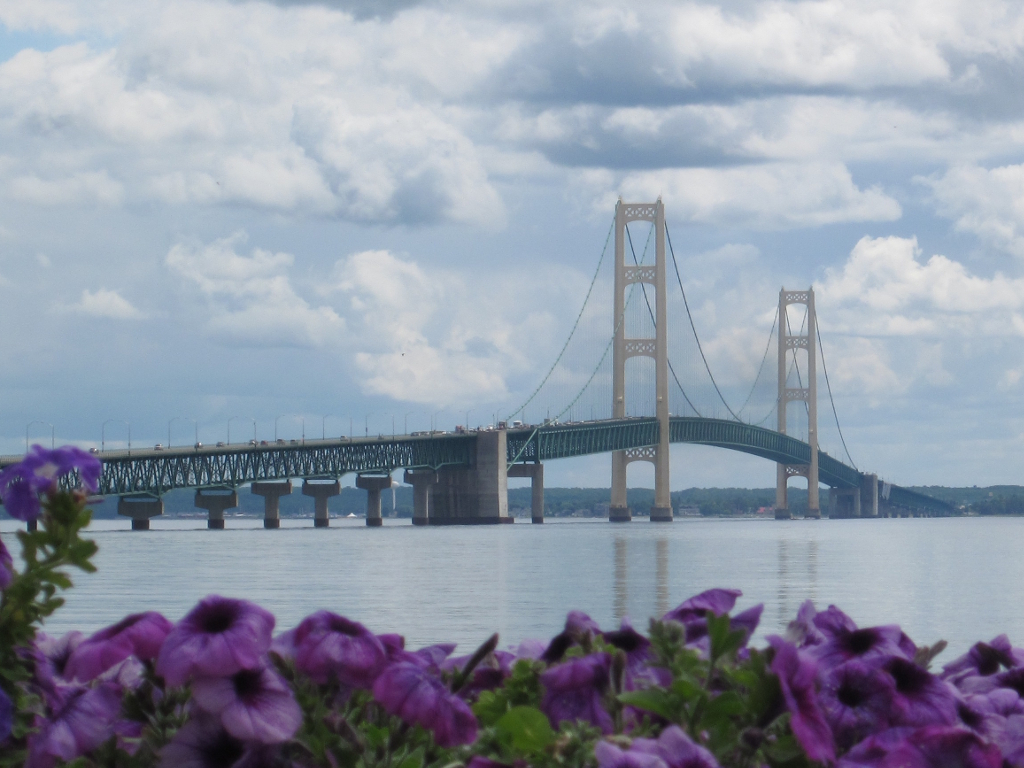
Photo Credit: Karl Jansen
This photo is of the Mackinaw Bridge, which connects spans between the Upper Peninsula of Michigan and the Lower Peninsula over Lake Michigan/Huron. The Mackinaw Bridge is suspension bridge and was completed in 1957. The length of the bridge is 26,372 feet (4.99 miles) and its longest span is 3,800 feet. Suspension bridges are unique in the way the loads of the bridge are transferred to the ground. The cables of a suspension bridge work in tension, carrying the loads to the two towers which work in compression against the foundations on the earth. The cable ends are then secured in massive blocks of concrete that hold the tension in the cables completing the load path.
